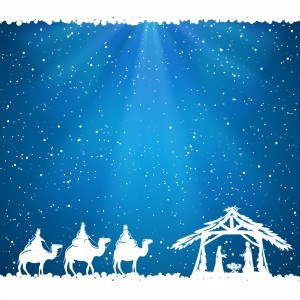Decorating trees, exchanging gifts, putting up lights and setting out cookies for Santa Claus are what most people imagine when they think of Christmas.
For Christians, December 25 is of much more importance since it honors a day of celebrating the birth of Jesus Christ about 2,000 years ago. But you may not know that December 25 wasn’t a day dedicated to Jesus’ birth, and in fact, the date isn’t even mentioned in the Bible. Early Christians couldn’t agree on what day Jesus was actually born. Not until the third century did December 25 became the official celebration date, most likely because it concurred with existing Pagan festivals.
The end of the eighth century marked a time when Christmas was widely spread across all of Europe, and was more so celebrated like Mardi Gras in New Orleans is celebrated today. The conservative Puritans were disgusted with this behavior and in 1644 the Massachusetts legislature would begin to fine anyone who observed Christmas five shillings, which was a lot of money back in the day.

Shockingly, Christmas as it is today wasn’t celebrated the same way until the 1800s, which is when Prince Albert of Germany took his family’s tradition of decorating trees to England with his wife Queen Elizabeth. This royal tradition made its way to America via a magazine publication of pictures of the ridiculously tall and decorated tree in 1848.
Christmas cards became a thing about the same time, and gift giving soon after. Originally, the exchange of gifts stemmed from religion to remind people of the three kings who brought gifts to baby Jesus. However, the Industrial Revolution and a rise in advertising in the 19th and 20th centuries made Christmas the commercial holiday it now is. Although, of course, to Christians Christmas still carries religious meaning.
The most famous face of the holiday, Santa Claus, is based on Saint Nicholas III who was a Dutch Saint known for giving gifts and who was often called Sinterklaas. Through the years, Santa wore many different colors but his popular red-suited self stuck after a Coca-Cola ad in the 1930s.
From the date of the holiday itself to the traditions associated with it, Christmas has a long and colorful history.




